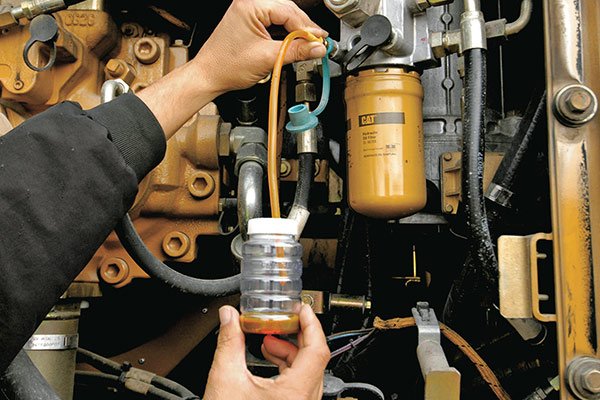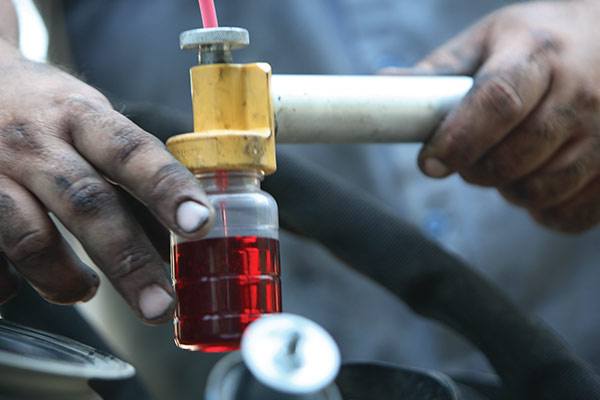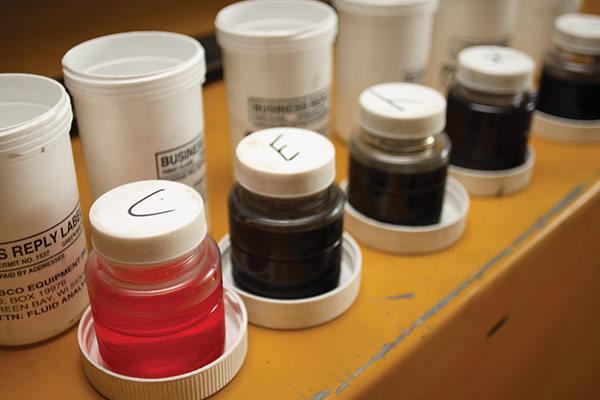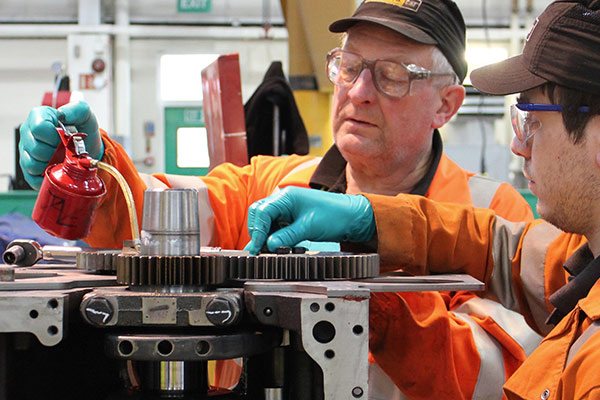Oil Analysis is one of the most useful and important maintenance support programs available.
Here’s why:
- Detects problems early, so they can be repaired before they become major failures.
- Helps you schedule downtime to fit your workload.
- Monitors positives as well as negatives, so you won’t have to pay for repair of components that are not worn out.
- Allows you to monitor maintenance schedules to verify that routine maintenance has been performed.
- Enables you to better manage budgets by predicting repairs, downtime, and equipment life.
- Helps you develop a complete service history for each machine. This proves invaluable when evaluating performance and planning replacement purchases.
- Documents service history for a higher price at trade-in or sale.
For maximum protection, you need oil sampling for all major oil lubricated systems (engine, transmission, hydraulic system and final drives) and coolant sampling for your cooling systems. By pinpointing trouble early, you can avoid shut-downs for unplanned repairs or catastrophic failures.
Oil Analysis
Our oil analysis tests have been developed by Caterpillar engineers and chemists to evaluate the condition of your engines and machines, rather than the condition of the oil alone. Following is a brief description of the standard tests offered in our fluid analysis program. Additional tests, such as viscosity, TBN, or TAN, may be performed, if needed.
Wear Rate Analysis monitors wear by detecting, identifying and assessing the amount of and type of wear metal elements in the oil. The rate at which wear metal particles increase from sample to sample is as important as the quantity of particles in the oil. For this reason, regular sampling at specified intervals is necessary to establish wear rate trends for each oil lubricated compartment. The presence of silicon and other elements which indicate dirt entry are also monitored with Wear Rate Analysis.
Oil Cleanliness Analysis uses a Particle Count test for non-engine oil. It detects both metallic and non-metallic debris (such as friction disc material) generated by wear, as well as dirt from outside sources. This information, along with Wear Rate Analysis, permits a comprehensive evaluation of your hydraulic and power train systems. This combination can detect potential failures not identified by Wear Rate Analysis alone.
Oil Condition Analysis determines loss of the oil’s lubricating properties. An infrared analysis instrument is used to compare the properties of new oil to the properties of your used oil sample. This test allows the technician to determine the extent to which the oil has deteriorated during use and to verify that the oil is performing up to specification during the entire oil change period.
Detection of Fuel, Water, and Glycol
The presence of Fuel, Water or Glycol is an indication of problems which require immediate correction. Fuel dilution reduces the oil’s viscosity and destroys its lubricating properties. Some unburned fuel may enter the crankcase past the piston rings, particularly if the engine is run at idle for extended periods during cold weather. Fuel dilution beyond 4% by volume, however, can lead to piston ring sticking and failure of the engine bearings. Glycol (coolant) contamination causes rapid oxidation of the oil and will lead to a major engine failure if not promptly resolved. Water can contaminate an oil system by leaking in from the outside or by condensing within a hot oil compartment or engine crankcase. Water will cause the oil to form a sludge which will plug filters. Oil contaminated with water passing between close fitting moving parts will cause “hot spots” leading to reduced component life or rapid failure.
Protect the Value
Cat machines are built to deliver the highest possible performance through-out their production life. Maintenance is essential to achieve that performance, and our fluid analysis program is a good first step. However, there’s much more we can do to maximize the return on your equipment investment. Talk to us about complete preventive maintenance programs and Customer Value Agreements.







